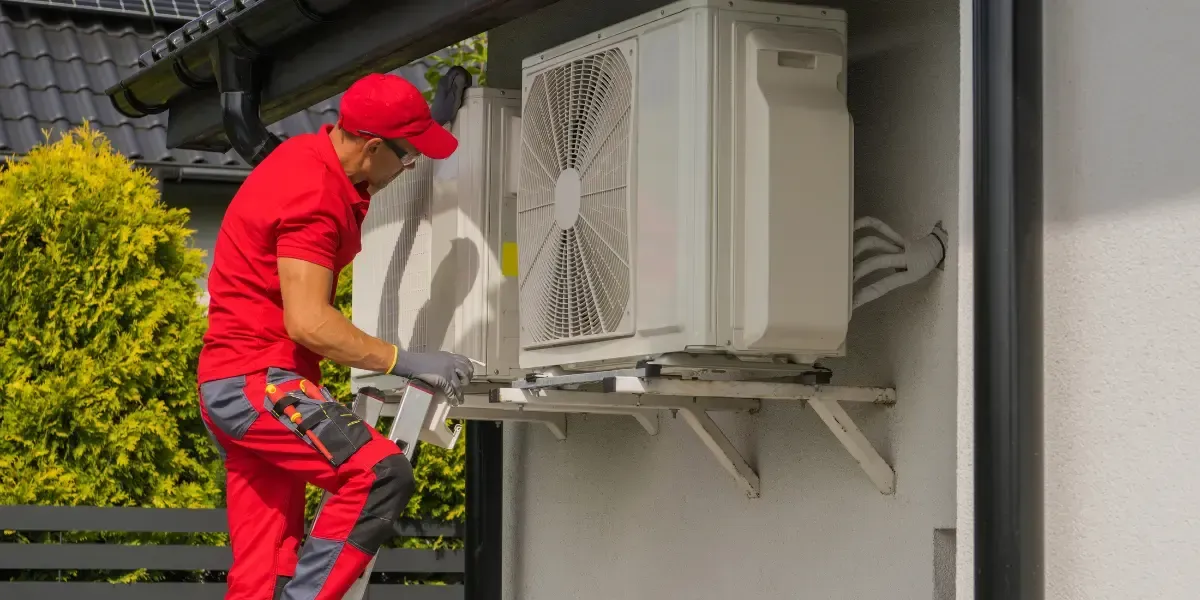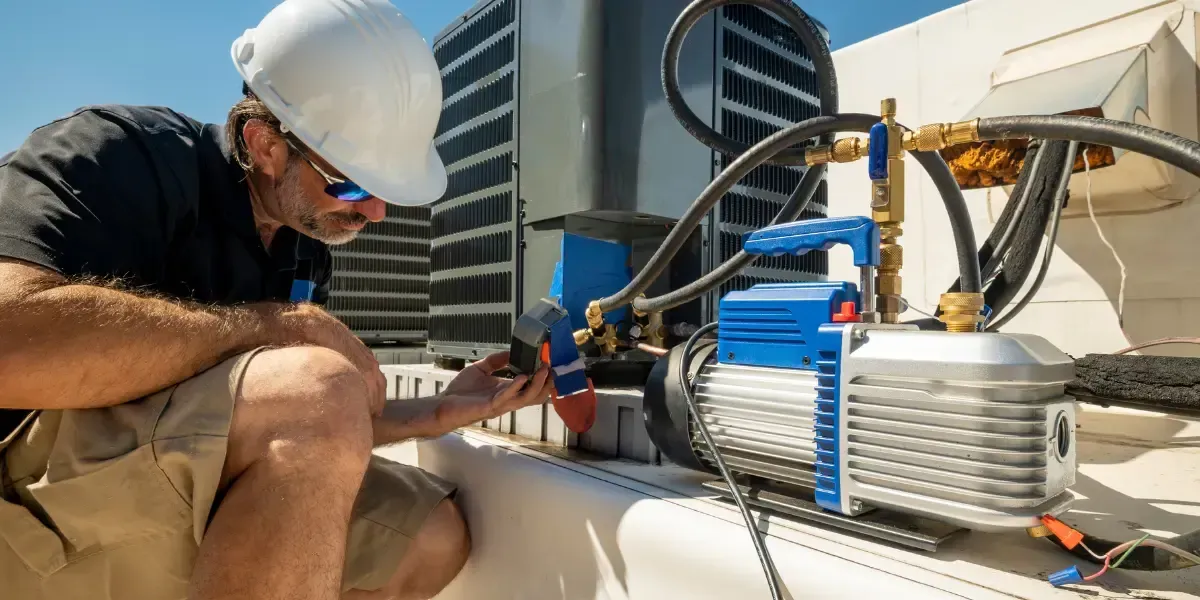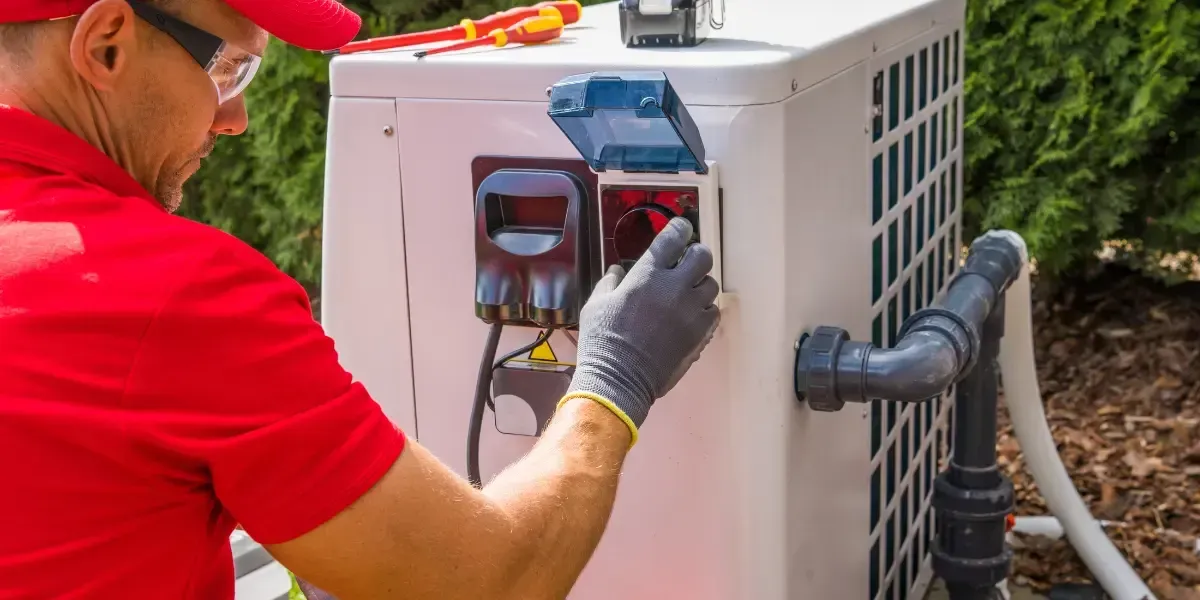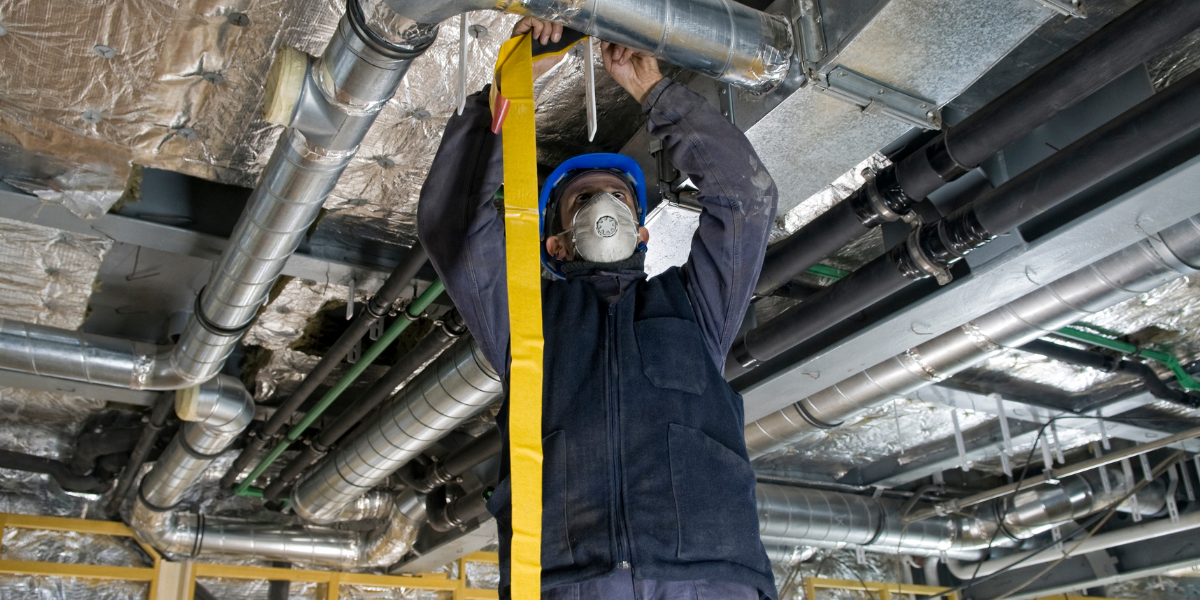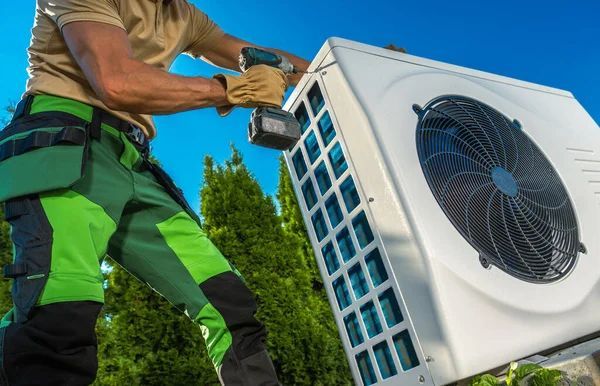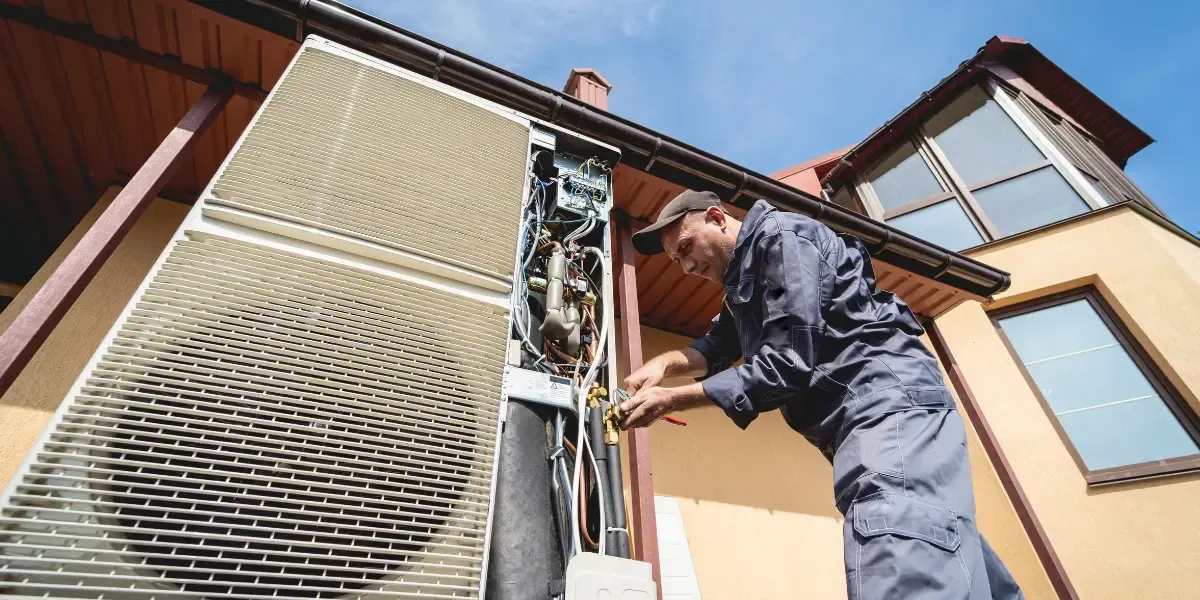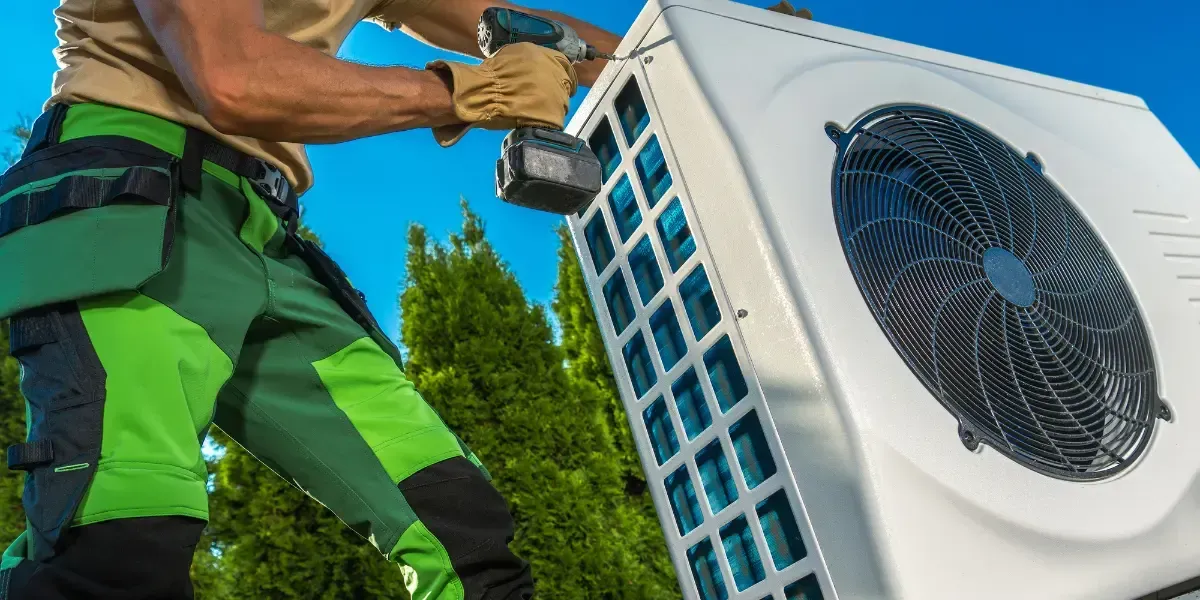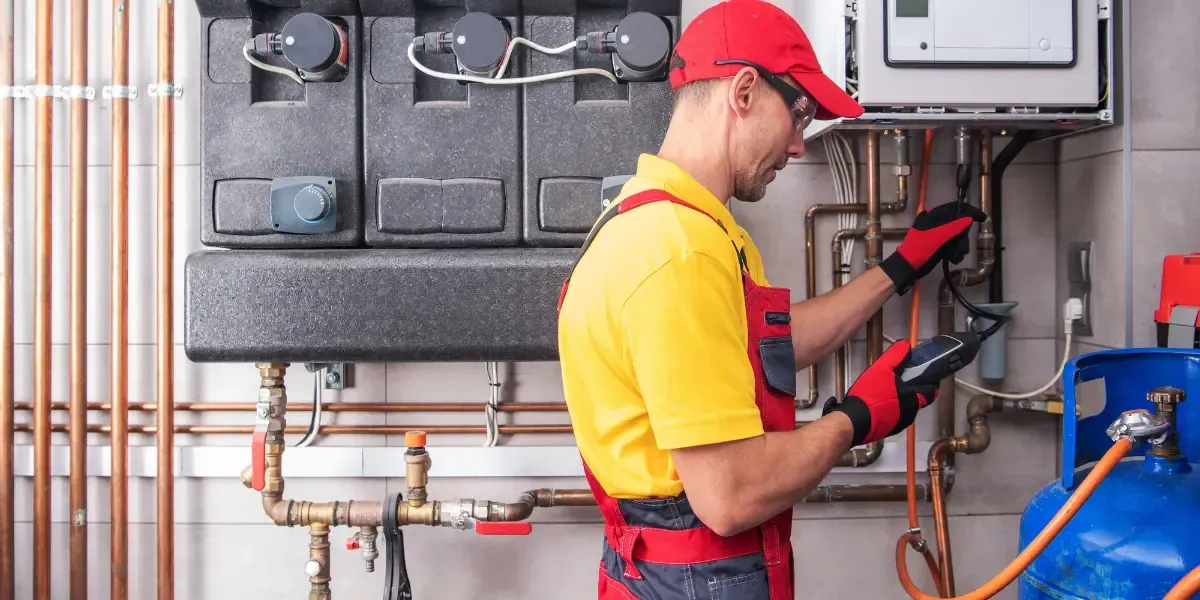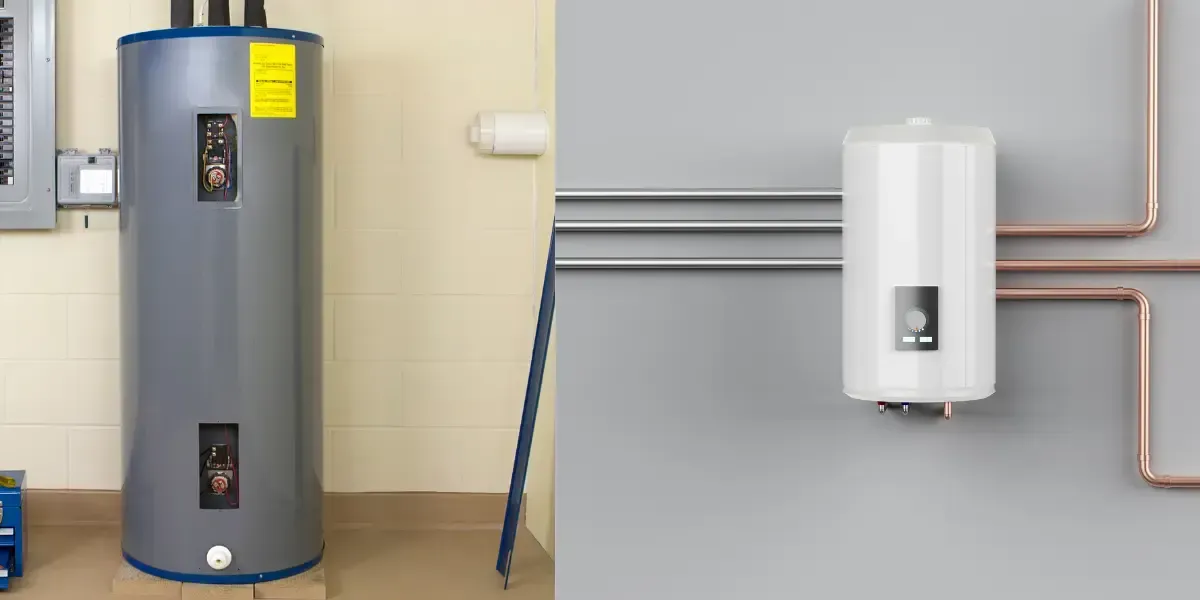Easy Steps to Install a Heat Pump System at Home
Installing a heat pump system at home can change everything for your comfort and energy bills. Heat pumps provide a helpful way to manage indoor temperatures all year. They can save you money on electricity and lower your carbon footprint. Unlike traditional heating systems, a heat pump moves heat instead of creating it.
This method helps you get to your comfort level without using too much energy. With a few easy steps and some guidance, you can quickly set up a heat pump system. You will enjoy better air quality, lower bills, and a cozy home.
In this guide, we will show you how to install a heat pump system by yourself. We will help you avoid some common mistakes. If you want to improve your HVAC system or add a good option for energy use in your home, this step-by-step guide will help you begin a good installation.
Key Takeaways
- Heat pumps are energy-efficient systems that move heat instead of generating it, offering year-round comfort and reduced energy costs.
- Choosing the right type and size of heat pump is crucial for optimal performance and energy savings.
- Proper installation involves securing the indoor and outdoor units, connecting refrigerant lines and electrical wiring, and testing the system.
- Regular maintenance, like cleaning filters and checking refrigerant levels, helps extend the lifespan and efficiency of the heat pump.
- Professional installation, such as by Monterey Bay Heating and Cooling, ensures safety, compliance, and long-lasting performance.
What You Should Know Before You Install a Heat Pump
Types of Heat Pumps Available
There are three main types of heat pumps to think about:
- Air Source Heat Pumps: These units take heat from the air. They are easy to set up and usually the most affordable option for homeowners. Air source heat pumps work well in mild climates but may not work well in very cold weather.
- Geothermal Heat Pumps: These systems use heat from underground. They have pipes that draw heat from the earth. Although they cost more to install and require more work, geothermal heat pumps are very effective and perform steadily all year, even in colder weather.
- Water Source Heat Pumps: These are best for homes near large bodies of water. They pull heat from nearby water sources. Water source heat pumps are very efficient, but they only work well for homes close to lakes, rivers, or ponds.
Selecting the right type of heat pump depends on your budget, climate, and energy needs. Talking with Monterey Bay Heating and Cooling is a good way to get helpful advice for your specific home situation.
Understanding Heat Pump Components
A basic heat pump system includes:
- Compressor: The main part that compresses and moves refrigerant. It helps heat move between the inside and outside units.
- Indoor Unit (Air Handler): This part sends warm or cool air into your home. It usually has a blower to move air well.
- Outdoor Unit: This holds the compressor and condenser. It works with the indoor unit.
- Refrigerant Lines: These are important for moving refrigerant between the indoor and outdoor units. They help with the heat exchange needed for the pump to function.
Getting to know these parts can help make the setup easier and help with fixing issues in the future.
Choosing the Right Size and Model
Choosing the right size heat pump is very important for your comfort and how well it works. A small system will have a hard time keeping the right temperature. A big unit can turn on and off too often, which wastes energy and can make it wear out quickly.
It's a good idea to have an HVAC expert look at your home’s space and insulation to find out the best size. If you live in Monterey County, Monterey Bay Heating and Cooling offers free estimates and can help you pick the best heat pump model for you.
Preparing for Heat Pump Installation
Gathering Necessary Tools and Materials
Before you start, make sure you have these tools:
- Drill and Drill Bits: These are used to make holes for refrigerant lines and to install units.
- Screwdrivers: A range of sizes is needed to secure brackets and covers.
- Refrigerant Line Set: This connects the indoor and outdoor units.
- Pipe Insulation: This helps stop heat loss along the refrigerant lines.
- Electrical Wires and Connectors: These connect the heat pump to the power supply.
- Level: This checks that the mounted units are aligned correctly.
Checking Installation Requirements and Permits
Some local governments need permits for HVAC installations, especially when electrical work is part of it. You should check with your city or county office. This way, you can make sure your installation is correct and your investment is safe.
Ensuring Safe Working Conditions
Heat pump installation needs electrical work, so make sure to turn the power off before you start. Clear away anything that might get in your way during the work. Always put on safety gear when using tools or lifting heavy items.
Picture going through a cold winter without heat. Think about facing a hot summer without air conditioning. Heating and cooling systems are important for your comfort. They also keep you healthy. These systems can help stop problems like mold or frost that could harm your home.
Step-by-Step Guide on How to Install a Heat Pump System
Step 1: Setting Up the Outdoor Unit Location
- Choose a flat and stable place outdoors that has good airflow. Keep it clear of obstacles like walls, bushes, or fences.
- Place the unit on a concrete pad or platform to help lessen vibrations.
- Use a level to check that the unit is flat. If it’s not, make adjustments to stop water from gathering or causing problems.
Step 2: Preparing the Indoor Unit Site
- Pick an indoor wall that is near the outdoor unit to make the connection easier.
- Make sure there is enough space for air to flow around the indoor unit. Avoid things like furniture in the way.
- Securely attach the indoor unit bracket on the wall following the guide from the maker. Check with a level to ensure it is straight.
Step 3: Installing the Indoor Unit
- Put the indoor unit on its mounting bracket, making sure it fits properly and safely.
- Link the refrigerant lines to the indoor unit, being careful to follow the steps to prevent leaks.
- Cover the refrigerant pipes to stop heat loss, make it work better, and prevent moisture problems on humid days.
Step 4: Installing the Outdoor Unit
- Secure the outdoor unit to the concrete pad or platform.
- Connect the refrigerant lines from the indoor unit to the outdoor unit. Tighten the connections well to stop refrigerant leaks and keep everything working well.
Step 5: Connecting the Refrigerant Lines
- After you attach the refrigerant lines, use a vacuum pump to take out any air or moisture inside. Moisture in the refrigerant lines can cause big problems with heat pump performance.
- After this, seal the connections and make sure all valves are tight.
Step 6: Connecting Electrical Wires and Controls
- Run the right wires from the outdoor unit to the indoor unit, following local electrical rules.
- Install a special circuit breaker for the heat pump system. This helps with safety and makes repairs easier later on.
- Check all connections again and ensure the wires are tight. Loose wires can cause safety issues or hurt how well the system works.
Step 7: Testing the Heat Pump System
- Turn on the power to the unit and test the heat pump at all its settings. Make sure the heating and cooling modes work properly.
- Check the refrigerant lines for any leaks. Also, ensure the unit turns on and off as it should, without sudden stops or strange sounds.
- Then, watch the system through a complete cycle to make sure it keeps the right temperature.
Common Installation Mistakes and How to Avoid Them
Avoid these common mistakes to make sure your installation works well:
- Wrong Line Sizing: Using the wrong sizes for refrigerant lines can hurt system performance and cause problems.
- Skipping Permits: Not getting the permits you need can lead to fines or a change in your home insurance.
- Poor Insulation: Not insulating refrigerant lines can lead to water build-up and less energy savings.
Maintenance Tips for a Long-Lasting Heat Pump
Routine care can help your heat pump last longer and work better.
- Clean or Change Filters Often: Dirty filters make your system work harder, which can lower its effectiveness and how long it lasts.
- Check for Refrigerant Leaks Once a Year: You need to look at refrigerant levels every year. Low refrigerant can greatly harm how well your heat pump works.
- Plan Yearly Check-Ups: Regular service by Monterey Bay Heating and Cooling helps keep your heat pump running well.
Troubleshooting Common Heat Pump Issues
- Unit Not Heating or Cooling Properly: This might happen if the filters are clogged, there are low refrigerant levels, or the thermostats are set wrong.
- Strange Noises: Noises may mean there are problems with internal parts or leaks in the refrigerant.
- High Energy Bills: This could show that old or broken parts cause the unit to work poorly.
How Monterey Bay Heating and Cooling Can Help You
Monterey Bay Heating and Cooling has more than 9 years of experience. This makes them a trusted local expert in HVAC. Here are the reasons to choose them for your heating and cooling needs:
Why You Should Choose Monterey Bay Heating and Cooling
- Certified Technicians: Skilled in both old and new HVAC systems.
- Affordable Pricing: Good rates and clear pricing to fit your budget.
- Free Estimates: Expert advice and free quotes for installations.
- Virtual Consultations: Talk about your project needs from anywhere.
- Heat Pump Water Heaters: Free for some customers, giving extra value for energy-saving homeowners.
Choosing to have a professional installation from
Monterey Bay Heating and Cooling will help your system work well and safely for many years.
Conclusion
Installing a heat pump system in your home is a good way to stay comfortable and save energy. By following these steps and not making common mistakes, you can set it up well. If you need help, Monterey Bay Heating and Cooling offers installation services, free estimates, and support to make the whole process easy.
Call Monterey Bay Heating and Cooling today at
(831) 905-6480 to set up your installation. Enjoy good help and skill.
Frequently Asked Questions
What’s the typical lifespan of a heat pump?
Heat pumps typically last 15 to 20 years. They need regular care.
Can I install a heat pump system myself?
Yes, but it is important to follow all safety rules and local codes. It is best to hire a professional.
How often should I service my heat pump?
Regular check-ups are good for helping your heat pump run well.
Are there any rebates for installing a heat pump?
Many places give rebates or tax breaks for energy-saving systems. Look at local programs for details.
What size heat pump do I need for my home?
The size will depend on how big your home is and how well it is insulated. A professional can help you find the best option.

